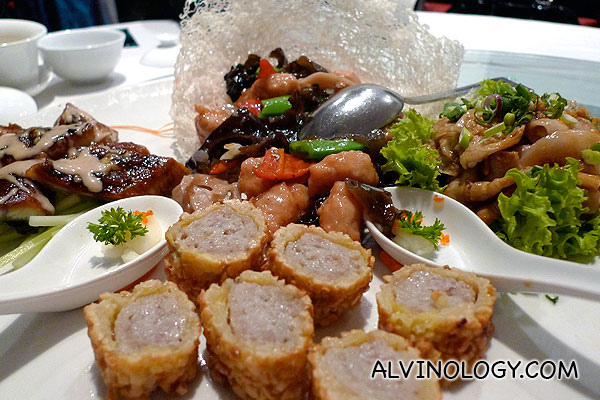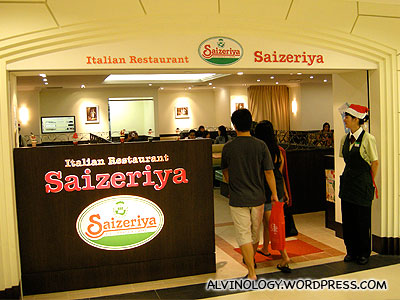Do you remember your first day going to a coffee shop chain? Foreign terms thrown around everywhere, coffee jargon plastered on the walls, and the barista bombarding their customers with questions. The customer in front of you, they’re ordering like a coffee guru. If you weren’t nervous before, you’re nervous now.
Their order is extremely detailed and straight to the point. It’s your turn now but you still don’t know. What’s a medium roast like? Who’s coffee Arabica? French press? No french press? What’s the difference? Who cares? Well, we do and so should you. There’s a lot that goes into picking coffee, not just at a coffee shop, but at home which is even more important. In the same way everyone is looking for enlightenment, they are also looking for the perfect cup of coffee. If you can call yourself a traveler on the path for the most sublime cup of joe, you’ve got to know coffee, from bean to grind. In other words, this guide is all you need.
Coffee Beans
1. Arabica
This is the most produced type of coffee bean worldwide, and so, chances are, you might have heard of it, but what makes it so special? The beans themselves are so delicate. In production, they are easily influenced by their environment and, in preparation, a bad brewing method can truly damage the flavor. A finely brewed cup of Arabica coffee should taste a little sweet with low acidity. If it’s acidic, then it’s either been brewed badly or it’s not Arabica. Keep in mind that serving Arabica cold will compromise the flavor. This bean works best if you want a smooth, light taste with a delicious, sweet aroma.
2. Robusta
As the name suggests, Robusta has a robust flavor. It is the second most-produced type of bean, and it distinguishes itself because of its high caffeine content. It’s almost double the amount found in Arabica which makes Robusta beans the source of the strongest coffee around, owing to the intense caffeine concentration. As for the flavor, it is intense, but high-quality beans maintain their smoothness despite the flavor. Even better, if you pay attention to the taste, you’ll notice a hint of chocolate. Although, it is important to let each sip linger on the back of your tongue as this is where you can taste the bitterness. For an intense, yet smooth cup, coupled with a cube or two of dark chocolate, go with Robusta.
3. Liberica
While not as famous as the rest, Liberica beans definitely offer an interesting range of flavors and an odd origin story, too. In the nineteenth century, a disease wiped out all Arabica beans, leaving Liberica some time in the spotlight until Arabica farmers recovered. Due to the rare conditions in which Liberica beans are grown, they are often seen as a fine treat. In a good cup of Liberica coffee, you’ll feel a strong creamy texture and taste an interesting smoky flavor. On top of all that, you’ll smell the distinct fruity or floral aroma. The coffee has a well-rounded flavor profile that makes it a good choice for a relaxing afternoon cup.
4. Excelsa
If you are the type of person who actively considers tomato a fruit, based on its botanical classification, then you can consider Excelsa a species in the Liberica family. However, if you want the truth, flavor-wise, Excelsa couldn’t be more different from Liberica. As opposed to the fruity aroma and woody taste of Liberica, Excelsa has an intriguing tartness and a fruity, yet smoky taste. It only makes for 7% of the world’s production, but to get one finely-brewed cup is more than worth the trouble.
Roast Type
– Light Roast
Most people believe that a light roast stands for a low caffeine content, but this is only a misconception. What science says is that the more you roast coffee, the more caffeine is burnt off, the less caffeinated the final product is. So, while a light roast has a light flavor and body, is acidic, it has a lot more caffeine than dark roasts. Not to mention, if you truly want to feel the full flavor profile of a bean, you’ll want to roast it as little as possible, so as to intensify but not alter the flavor.
– Medium Roast
If you are not a fan of acidity but you also don’t want to heavily compromise on a varied flavor profile, a medium roast is what you need. A medium roast has a fuller body, a bitter taste, but not as much acidity as light roasts. You should, however, keep in mind that it has a lower amount of caffeine and the extra roasting noticeably dulls the flavor.
– Dark Roast
Dark roasts are known for their full body and their smoky taste. They are also known for their low acidity which makes them a great option for people with sensitive stomachs. The range of flavors unlocked by dark roasts is deep and dark. Meaning, a dark roast can either taste like heaven or hell. It solely depends on your preferences.
Grind Size
When it comes to grind size, the science is simple, but not easy. If you want a strong coffee, finely grind your beans. If you prefer a lower caffeine content, go for a coarser grind. Nevertheless, for each brewing method, you need a specific grind size, else you’d be risking a taste that’s too bitter or too acidic. If you don’t mind ruining your coffee, finely grind your coffee every time for a jolt of caffeine. Otherwise, you need to stick with coarse grounds for slow brewing methods, like french presses, and fine grounds for fast methods, like espresso.
We promised you a perfect cup after reading this article, and this is how you get it. From what you’ve read, you ought to understand that the perfect cup of coffee is relative to everyone’s taste, flavor, and mood. What we did was explain the flavors and effects that come with every roast and bean type. In other words, we provided a map. What you need to do is follow the map until you find the ultimate cup of coffee for your every mood. Enjoy!













![[Review] Durian Bakery’s New MSW Ondeh Mochi: A Must-Try Singaporean Innovation on a Classic Treat [Review] Durian Bakery’s New MSW Ondeh Mochi: A Must-Try Singaporean Innovation on a Classic Treat - Alvinology](https://media.alvinology.com/uploads/2025/06/the-durian-bakery-1-1024x576.jpg)
